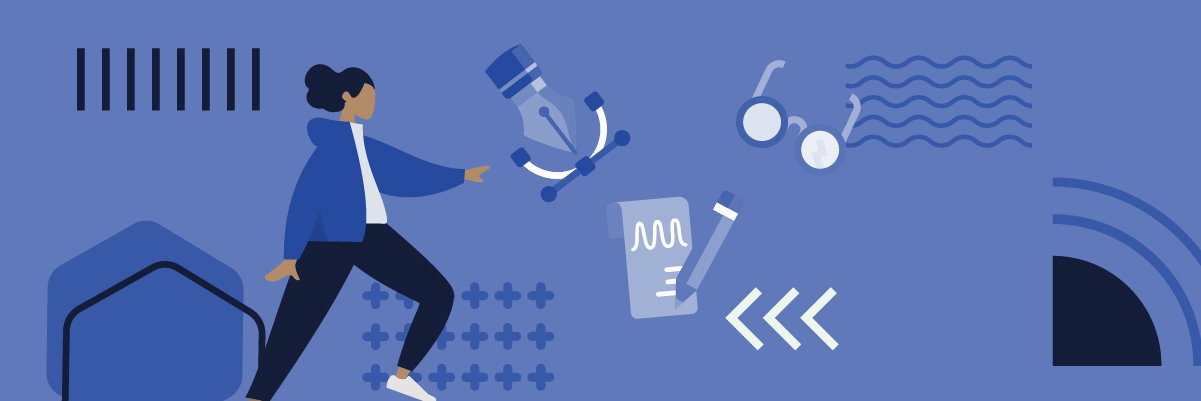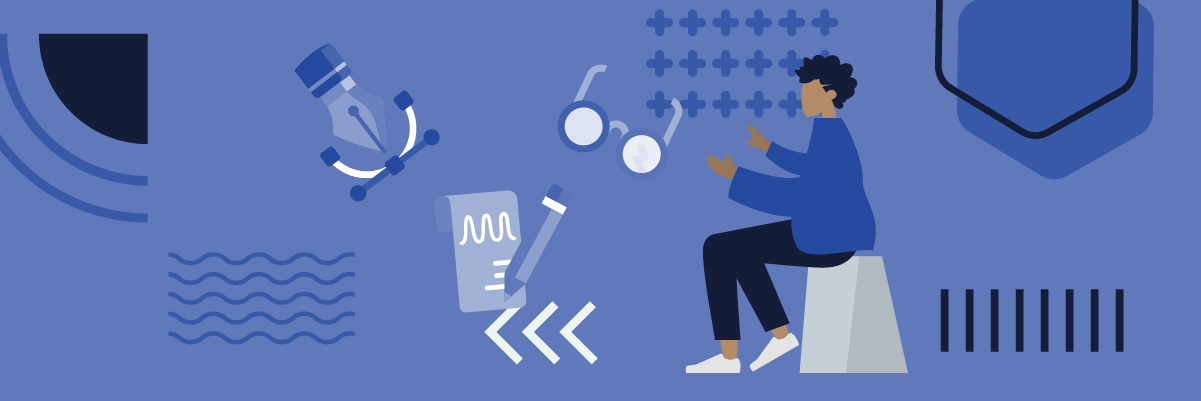If you run a modern business, then you sure need a user experience designer to update your user interface from time to time.
Netflix, Airbnb, and Spotify. What do these market movers have in common?
It simple; they offer the best user experiences. These companies owe part of their market dominance to seamless UX. In essence, they analyze their audience’s needs to develop the friendliest user interfaces.
Today, audiences are after a seamless experience across all platforms( call it omnichannel). Netflix, for instance, ensures viewers enjoy the best experience across all channels, including mobile, TV, tablets, and desktop.
For business owners, hiring a user experience designer is no longer an afterthought. Furthermore, because UX is a never-ending process, you need these experts to maintain a seamless interface throughout.
Let’s learn more about a user experience designer, shall we?
What Is UX? Who is a User Experience Designer?
What is your favorite app? Why do you like it?
Is it the ease-of-use, instant solutions, or are its looks appealing to you?
User experience (UX) refers to how one feels when interacting with a system, e.g., an app, website, or software. In essence, it has to do with simplifying human-computer interaction (abbreviated as HCI).
Therefore, user experience designers are experts in making user-friendly and intuitive interfaces. To them, both usability and looks matter.
“Design is not just what it looks like and feels like. Design is how it works.” -Steve Jobs.
For brands, small and big, HCI helps provide the best experiences to lure customers to services or products. On top of that, it allows companies to develop a customer journey that encourages business success.
Building exceptional user experiences increases the likelihood of conversions and more revenue while making life easy for your buyers. This increase is due to a smooth shopper journey from product search through checkout.
If customers find buying from your fun and stress-free, they wind up happy and satisfied with your services.
What does a User Experience Designer Do?
UX design is a multifaceted discipline–you push many buttons to achieve the primary objective. Thus, a designer must follow a sophisticated process to develop a proper interface for your business.
To put things into perspective, they must:
- familiarize themselves with your target audience
- interact with them
- build functionality maps
- test the interface
- and do much more
Achieving all these alone can be hectic, especially if you move most parts of your business. In addition, you may be lacking the skill sets to handle this complex process.
To excel in UX through outsourcing, hire an expert user experience designer at Bunny Studio to handle the nitty-gritty of design.
Below are some of the most common tasks in user experience design:
1. Create Personas
Before embarking on UX, it’s essential to understand your target. This step helps experts develop an interface that matches your audience’s needs and emotions.
Start by creating personas or a representation of the specific customer segment you’re targeting. Doing this ensures you design an interface with the type of person that may need to use your app or website in mind.
2. Do Interviews
This step involves organizing sessions with potential or existing product users to gather clues on what shoppers and would-be clients consider the best design.
It’s wrong to begin developing an interface before one-on-ones with users and would-be users.
3. Collect Stories
These are brief, detailed descriptions of a proposed app or website feature. In this step, you ask the proponent behind the marker to explain its role from their perspective.
4.Build a Functionality map
After going through the stories, begin building a functionality map for the features and pages you’d like to include. Functionality maps are a detailed step-by-step strategy for all the features/pages in your app or website.
Developing this map makes it simpler to trace how a user can navigate from one point to the next. It also helps streamline the UX process.
5. Develop Wireframes
Wireframes allow you to correct all usability errors before you develop an app or website. This can save you ample time and correction work moving forward.
Spend quality time developing wireframes. These visual representations display your product’s framework to give a sneak peek of what it will look like.
6. Release a Prototype
A prototype is simply a “copy” version of your end product which you use to test its functionality before a product launch. Prototyping ensures you don’t throw money and time doing a launch only to notice mistakes later.
7. Do a Usability Test
Usability tests are a way to gauge how user-friendly your website or mobile app is by sharing it with real visitors. Users help spot any obstacles or issues encountered when navigating it.
The usability testing is probably the last step before launching the final product. Still, it should come after all the identified problems have been solved.

The Cost of UX and Salary for User Experience Designer
What’s the average cost of a UX project? Are there any factors to consider when hiring an expert?
Find out more below.
Salary for UX designer
How much you pay may depend on multiple factors like project complexity, where you source your UX designer, who handles your project, etc.
For instance, working with a design company can be expensive because most firms have fixed non-negotiable rates. If affordability matters to you, hire a solo freelancer or submit your project on platforms like Bunny Studio and get access to a pool of tested UX gurus.
These sites handle your UX work at a relatively affordable cost compared to most established design companies. Moreover, you’re sure to get quality work customized for your audience’s needs.
Cost of UX
Generally, it’s safe to allocate 15 to 20 percent of your entire startup project budget to UX.
Nevertheless, there’s no fixed cost, and whatever you spend on a UX project can fluctuate from one company to the next. That being said, how much you pay may depend on factors like the workload, your needs, complexity, etc.
In general, sophisticated projects attract more money.
How Can a User Experience Designer Benefit Your Business
Developing user-friendly interfaces can offer multiple benefits to a business operating in a competitive market. It also helps you stand out from the crowd and pose as a customer-friendly brand.
On the flip side, bad UX can threaten your bottom line. A full 70 percent of ecommerce businesses die prematurely because of poor usability. Plus, 88 percent of web shoppers say they can’t return to a brand after having a bad experience.
These two stats highlight why this process is now a must-do for any forward-thinking business.
Below are some of the top reasons to prioritize UX.
1. Reduces Support Load
Responding to many tickets can drain your support agents of their morale and energy. It can also mean more expenses because coming your way because you must employ more staff and spend more on customer care.
Hence, developing a straightforward customer journey helps ensure everyone who comes to your website accesses all the info they need.
When everything is evident and self-explanatory, you’ll witness a drop in the number of customer queries concerning your product or procedures.
2. Boost Conversions
In a cut-throat market where you probably sell products or services sold on other platforms, you must have the X-factor that wins more customers.
Remember, shoppers are more willing to buy if a site is navigable, easy-to-use, and intuitive.
When you have more visitors trafficking your shop time, and again, conversion rates will likely go up. Therefore, linking with a user experience designer is a well-thought-out strategy.
A Forrester Research reveals the far-reaching impacts of usability on CSAT (customer satisfaction). It matters to buyers that great UX can:
- Boost their likelihood to make a payment by 14 percent
- Reduce their urge to move to competitor brands by 15 percent
- Increases their chance to suggest a service or product to others by 16 percent
In a nutshell, after a grueling project, you stand to enjoy troves of benefits from your hard work.
3. Impacts SEO Positively
A Search Engine’s role is to supply a web visitor with the most relevant info in the shortest time possible. Therefore, UX design helps impact your Search Engine ranking positively
An engine uses various factors to track user engagement. Fortunately, UX design has a direct and significant impact. UX focuses on multiple components, e.g.,
- How fast your pages load
- Mobile readiness
- A visitor-friendly URL format
Because Search Engine Optimization (or Search Experience Optimization) is central to your website’s visibility, spend time improving your user interface from time to time.
4. Makes customers loyal to your business
An intuitive website not only impresses clients on the first visit, but some also fall in love with a website and turn into loyal shoppers.
A loyal customer is a repeat buyer who commits to a brand for one reason or another, e.g., trust, affordability, user-friendliness, personalized experiences, etc.
Building a user-friendly website and improving it time and again attracts encourages customer loyalty.
A Summary of the Findings
Building exceptional user experiences is a clever way to increase the likelihood of conversions while making life easy for your customers.
This is possible through a simple customer journey, all the way from product search through checkout. If customers find buying from you fun and stress-free, they will likely recommend your brand to someone else.
Remember, UX design is a complicated process–you must push many buttons to achieve the primary objective. A designer must follow a long sophisticated process to develop a proper interface for your business.
Thus, if your business depends on it, don’t compromise on UI design. Be sure to choose an experienced candidate for your project.
If you plan to hire a freelancer, vet the platform before discussing any project.











